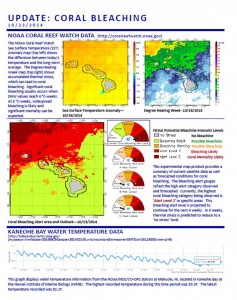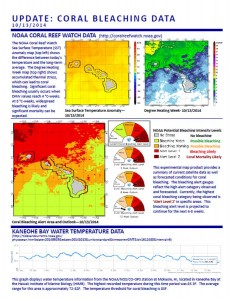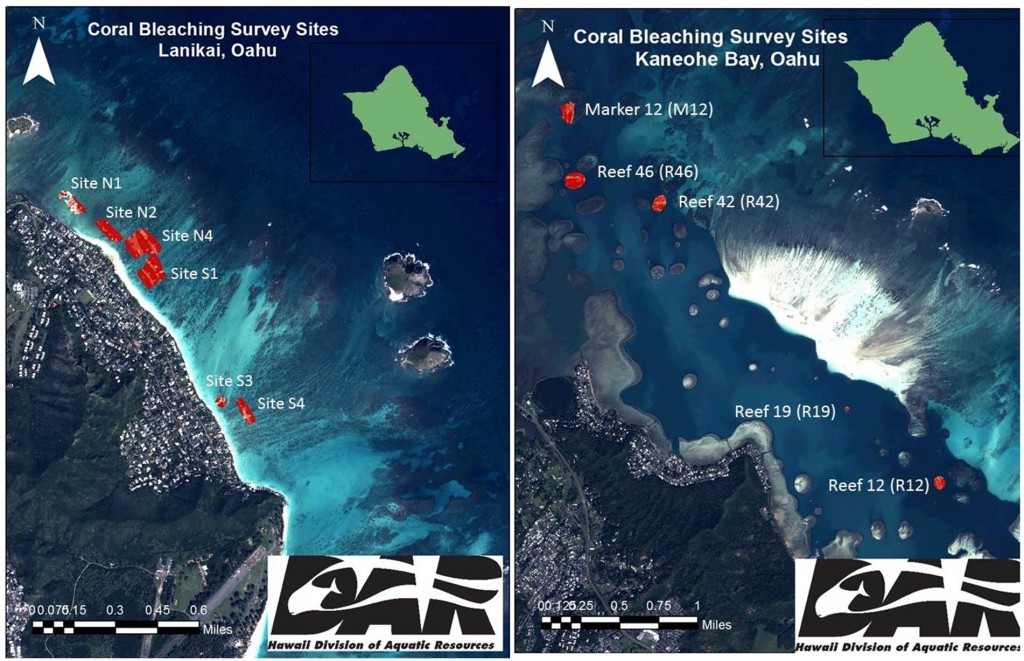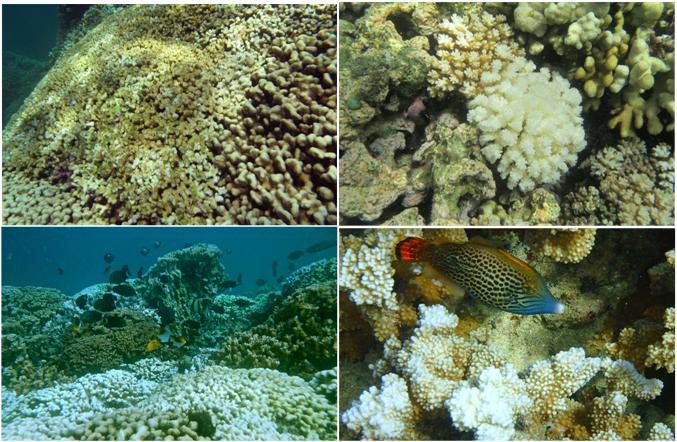Latest info: Coral Bleaching
Posted on Oct 6, 2014 in sliderLatest Update (10/30/2014):
A new page was created outlining the coral bleaching event and response: https://dlnr.hawaii.gov/reefresponse/current-rapid-responses/coral-bleaching-2014/
10/24/2014:
[button link=”https://dlnr.hawaii.gov/blog/2014/10/24/nr14-131/” type=”big” newwindow=”yes”] Click to download full press release[/button]Click to download the update:
Click to download the update (10/15/2014):
10/7/2014:
DLNR Division of Aquatics Administrator Frazer McGilvray has international marine resource experience, including dealing with coral bleaching events. In this video, McGilvray reflects on what he observed in Kaneohe Bay on Oahu’s windward coast, on global climate change and what we can each do to help protect and preserve precious natural resources such as corals.
[button link=”https://dlnr.hawaii.gov/reefresponse/files/2014/10/NR-Oahu-Coral-Bleaching-Oct.-2014_FINAL.pdf” newwindow=”yes”] CLICK FOR FULL NEWS RELEASE[/button]
10/6/2014:
Higher than normal sea surface temperatures (SSTs) have resulted in above-normal levels of coral bleaching at numerous near-shore locations on Oahu, especially severe along the windward coastline. Reports from ocean users and Eyes of the Reef Network (www.eorhawaii.org) volunteers prompted a response from the Dept. of Land and Natural Resources (DLNR), Division of Aquatic Resources (DAR) Rapid Response Team.
Over the past week the DAR team, along with partners, The Nature Conservancy and the Hawaii Institute of Marine Biology (HIMB) have conducted in-water surveys and assessments in Kaneohe Bay and off Lanikai and Waimanalo beaches. “Unfortunately, we are seeing evidence of wide-spread bleaching in shallow, near shore waters of windward Oahu,” said Frazer McGilvray, DAR administrator. “Coral bleaching is a stress response due to warmer ocean temperatures. Corals lose the color from their tissue, turning them snow white.”
William J. Aila, Jr., DLNR Chair said, “Corals can recover from bleaching if temperatures return to a normal range, but it can take many weeks to many years for them to fully recover from a bleaching event. Unfortunately, temperature forecasts suggest that the risk of bleaching will increase over the next several weeks. It is important that we continue to monitor the extent and severity of this bleaching event. It’s also critical that ocean users avoid disturbing corals at any time to avoid additional stress on them.”
Ocean users are encouraged to report coral bleaching through the Eyes of the Reef Network, which helps the DAR Rapid Response Team evaluate reef conditions and inform best management options. The department encourages anyone with underwater cameras to send photographs of bleached corals to [email protected].
The NOAA Coral Watch prediction tool click may be viewed at: https://coralreefwatch.noaa.gov/satellite/index.php



